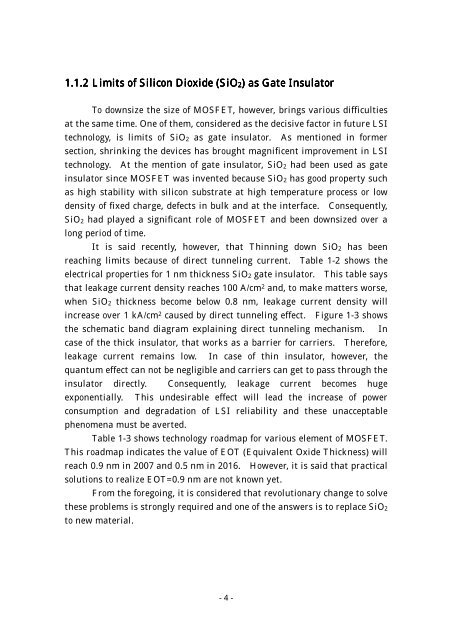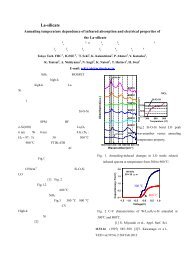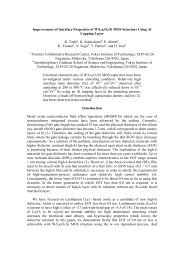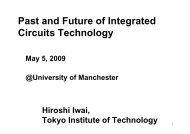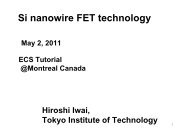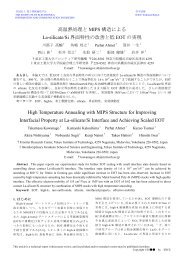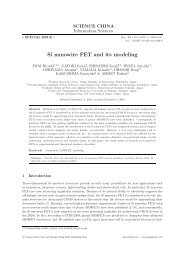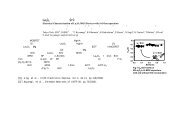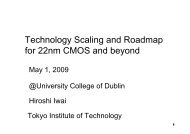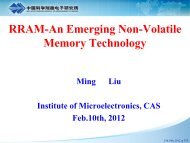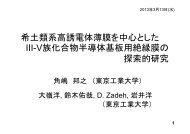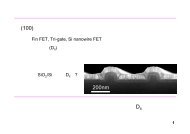Effect of Post Metallization Annealing for La 2 O 3 Thin Film
Effect of Post Metallization Annealing for La 2 O 3 Thin Film
Effect of Post Metallization Annealing for La 2 O 3 Thin Film
You also want an ePaper? Increase the reach of your titles
YUMPU automatically turns print PDFs into web optimized ePapers that Google loves.
1.1.2 Limits <strong>of</strong> Silicon Dioxide (SiO2) ) as Gate InsulatorTo downsize the size <strong>of</strong> MOSFET, however, brings various difficultiesat the same time. One <strong>of</strong> them, considered as the decisive factor in future LSItechnology, is limits <strong>of</strong> SiO2 as gate insulator. As mentioned in <strong>for</strong>mersection, shrinking the devices has brought magnificent improvement in LSItechnology. At the mention <strong>of</strong> gate insulator, SiO2 had been used as gateinsulator since MOSFET was invented because SiO2 has good property suchas high stability with silicon substrate at high temperature process or lowdensity <strong>of</strong> fixed charge, defects in bulk and at the interface. Consequently,SiO2 had played a significant role <strong>of</strong> MOSFET and been downsized over along period <strong>of</strong> time.It is said recently, however, that <strong>Thin</strong>ning down SiO2 has beenreaching limits because <strong>of</strong> direct tunneling current. Table 1-2 shows theelectrical properties <strong>for</strong> 1 nm thickness SiO2 gate insulator. This table saysthat leakage current density reaches 100 A/cm 2 and, to make matters worse,when SiO2 thickness become below 0.8 nm, leakage current density willincrease over 1 kA/cm 2 caused by direct tunneling effect. Figure 1-3 showsthe schematic band diagram explaining direct tunneling mechanism. Incase <strong>of</strong> the thick insulator, that works as a barrier <strong>for</strong> carriers. There<strong>for</strong>e,leakage current remains low. In case <strong>of</strong> thin insulator, however, thequantum effect can not be negligible and carriers can get to pass through theinsulator directly. Consequently, leakage current becomes hugeexponentially. This undesirable effect will lead the increase <strong>of</strong> powerconsumption and degradation <strong>of</strong> LSI reliability and these unacceptablephenomena must be averted.Table 1-3 shows technology roadmap <strong>for</strong> various element <strong>of</strong> MOSFET.This roadmap indicates the value <strong>of</strong> EOT (Equivalent Oxide Thickness) willreach 0.9 nm in 2007 and 0.5 nm in 2016. However, it is said that practicalsolutions to realize EOT=0.9 nm are not known yet.From the <strong>for</strong>egoing, it is considered that revolutionary change to solvethese problems is strongly required and one <strong>of</strong> the answers is to replace SiO2to new material.-4 -


